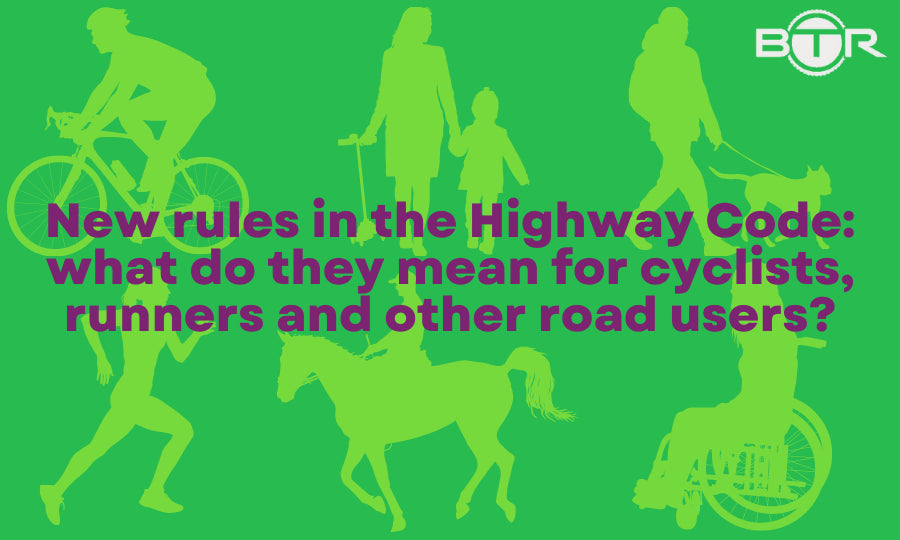Your Cart is Empty

You may have seen mention of some new rules coming to the Highway Code, which are due to be introduced on 29th January 2022. The overriding principle is that there is a now a “hierarchy of road users” with those road users deemed to be the most vulnerable - namely pedestrians and cyclists - being given priority at junctions and on roads.
In which case, however you use our roads - and chances are you use them as more than one type of user - it’s crucial to understand how these new changes will affect you.
The 'hierarchy of road users' relates to the level of vulnerability each user has compared to the others should there be a collision, for example. Therefore the order looks like this:
Essentially this means that those road users who may be more exposed are given a priority of safety. Those that can cause more harm are given more responsibility to prevent such situations.
It will now be mandatory for drivers to keep a 1.5m distance between their vehicle and the bike when overtaking.
Additionally, in the past, cyclists were expected to stay on the left when approaching road junctions, for example, but it is now recommended that cyclists ride in the middle of the road instead. This not only applies when approaching junctions but also when in slow traffic and on quiet roads.
There’s also new guidance on riding two abreast: “Be considerate of the needs of other road users when riding in groups. You can ride two abreast and it can be safer to do so, particularly in larger groups or when accompanying children or less experienced riders. Be aware of drivers behind you and allow them to overtake (for example, by moving into single file or stopping) when you feel it is safe to let them do so.”
This is helpful for cyclists as long as those drivers who are less tolerant of cyclists take it on board!
There’s still advice on the wearing of highvis and reflective clothing:
“Light-coloured or fluorescent clothing can help other road users to see you in daylight and poor light, while reflective clothing and/or accessories (belt, arm or ankle bands) can increase your visibility in the dark.”
In the past, if you were walking or running along the pavement, you’d have to stop to cross the road if a car was coming (if you were already on the road, you could carry on and the vehicle would have to stop, of course). This is now changing so that pedestrians have the right of way at junctions: “At a junction you should give way to pedestrians crossing or waiting to cross a road into which or from which you are turning. You must give way to pedestrians on a zebra crossing and to pedestrians and cyclists on a parallel crossing.”
I’m not sure how many of us - even with these rules in place - would dare just step out in front of a car or a lorry and hope that it would stop!
While drivers have to give cyclists a 1.5m berth, this increases to a 2m distance when passing horses. Speed-wise, drivers should slow to 10mph or less when passing a horse, or 30mph or less when passing a cyclist.
These rules are very welcome but it does need every road user to be aware of them. Given the lack of publicity so far (which may change, admittedly) it seems doubtful that all road users will be sufficiently educated to the new ‘hierarchy’ and what it means to them. There’s also the issue of drivers - particularly of lorries - who aren’t based in the UK and, therefore, are even less likely to know of these changes, let alone implement them.
What do you think? Were you aware of these changes? Do you think they’ll have the desired effect?
Comments will be approved before showing up.